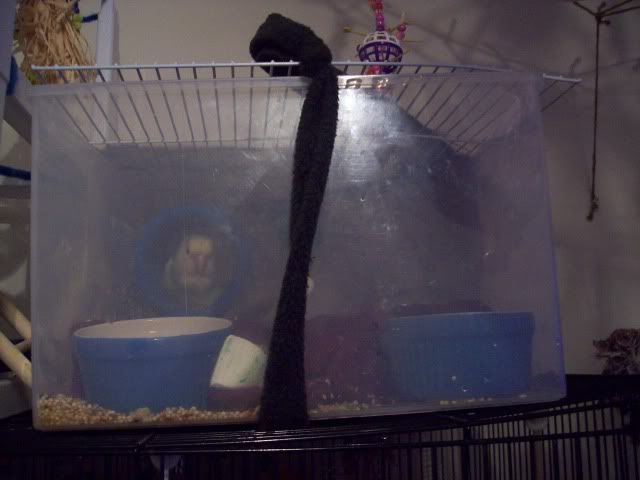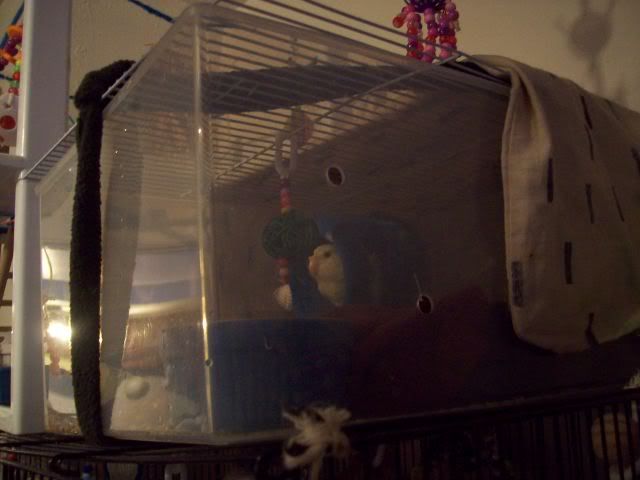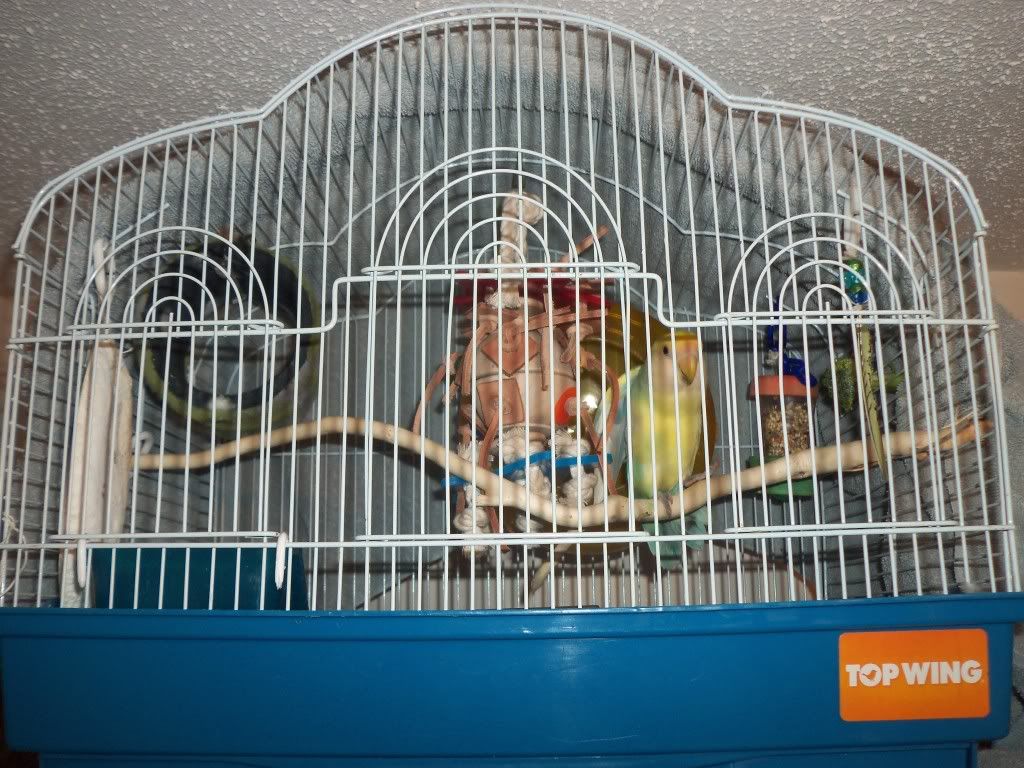Post by Casey on Mar 12, 2013 19:36:10 GMT -8
Every bird owner will eventually face the issue of having a sick or injured bird. This will mean the bird will need to be restricted to a safer and more comfortable enclosure.
This is where a hospital cage comes in handy.
A hospital cage can be either a small travel cage or an aquarium. Birds with wing or foot injuries will do better in an aquarium where they cannot climb around. Just be sure the lid has plenty of ventilation.
A heat source should be provided, but not enough for the bird to overheat. A heating pad can be set on low under half the hospital tank or cage, however heat lamps should be used very carefully or avoided if using a tank. A heating pad is the safest choice if using an aquarium.
Covering part of the cage provides warmth, protection from drafts, security, and privacy. It is ideal to cover part of the hospital cage so that the patient can recover in a secure and warm environment.
Food and water needs to be very easily accessible for the patient and should be placed where they can get to it. Placing spray millet on the floor of the hospital cage is a great food to keep up energy and placing it on the floor makes it easier for them to eat in their weakened state. Sick or injured patients may not eat much and it is very important that they eat, even if it is a treat food. If they will eat it, let them have it--it is better than letting them starve themselves.
Perches should be low to prevent climbing around and to preserve precious energy. It makes it easier for the patient to get around without using up energy in its weakened state. Aquariums do not have an easy perch option, so many bird owners find rolling up a tea cloth and laying it on the floor to be the best option. Lining the cages with soft fleece or tea towels is best as it keeps the patient warm, comfortable and safe from further injury.
A favourite toy or mirror can be placed to help comfort the bird in their time of need, but try not to clutter the cage.
Some examples of a hospital cage are shown below:
Male cockatiel with broken toe, restricted to a padded "tank" type hospital cage

A Heat lamp is good for hospital cages. Sick budgie:

Hospital cage "Tank Type" for Lovebird with broken toenail that had trouble with bleeding:


Hospital Cage "Cage Type". Sick lovebird:

Copyright Casey Meanney
This is where a hospital cage comes in handy.
A hospital cage can be either a small travel cage or an aquarium. Birds with wing or foot injuries will do better in an aquarium where they cannot climb around. Just be sure the lid has plenty of ventilation.
A heat source should be provided, but not enough for the bird to overheat. A heating pad can be set on low under half the hospital tank or cage, however heat lamps should be used very carefully or avoided if using a tank. A heating pad is the safest choice if using an aquarium.
Covering part of the cage provides warmth, protection from drafts, security, and privacy. It is ideal to cover part of the hospital cage so that the patient can recover in a secure and warm environment.
Food and water needs to be very easily accessible for the patient and should be placed where they can get to it. Placing spray millet on the floor of the hospital cage is a great food to keep up energy and placing it on the floor makes it easier for them to eat in their weakened state. Sick or injured patients may not eat much and it is very important that they eat, even if it is a treat food. If they will eat it, let them have it--it is better than letting them starve themselves.
Perches should be low to prevent climbing around and to preserve precious energy. It makes it easier for the patient to get around without using up energy in its weakened state. Aquariums do not have an easy perch option, so many bird owners find rolling up a tea cloth and laying it on the floor to be the best option. Lining the cages with soft fleece or tea towels is best as it keeps the patient warm, comfortable and safe from further injury.
A favourite toy or mirror can be placed to help comfort the bird in their time of need, but try not to clutter the cage.
Some examples of a hospital cage are shown below:
Male cockatiel with broken toe, restricted to a padded "tank" type hospital cage

A Heat lamp is good for hospital cages. Sick budgie:

Hospital cage "Tank Type" for Lovebird with broken toenail that had trouble with bleeding:


Hospital Cage "Cage Type". Sick lovebird:

Copyright Casey Meanney


